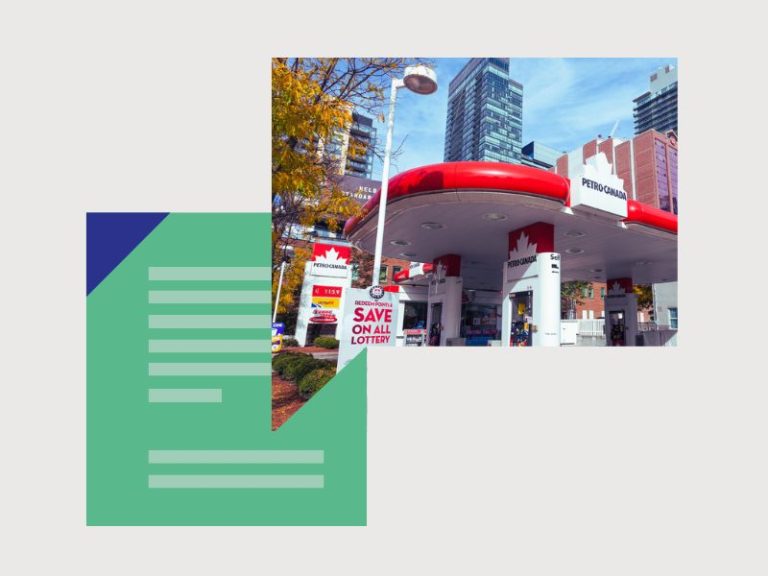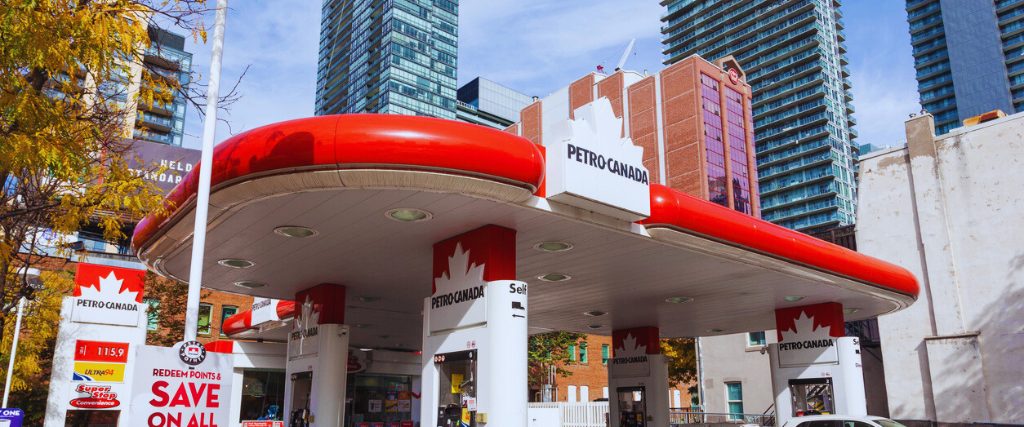Canadian 2024. Latest National Retail Petroleum Site Census available now.

Executive Summary
June 2, 2025
The 2024 National Retail Petroleum Site Census, researched and published by Kalibrate Canada, Inc., is a comprehensive enumeration of Canada’s petroleum retail outlet population. This study is unique; no other singular industry or governmental source of such information exists.
As of December 31st, 2024, there were 11,611 retail gasoline stations in Canada, which equals 2.8 outlets for every 10,000 persons.
This represents a decrease of 102 sites from last year’s survey result (a decrease of 0.9%), marking the lowest number of sites in Canada since tracking began in the late 1980s. However, the number of retail sites in Canada has remained relatively stable over the last decade and a half, hovering around the 12,000 mark since 2008 after experiencing nearly a forty percent contraction during the previous two decades.
The Canadian gas station
Our census documented 90 distinct fuel brands in Canada in 2024, down from 97 brands recorded in 2023. The proportion of sites operating under one of the three most common gasoline station brands in Canada—Esso, Petro-Canada, and Shell—increased in 2024, with representation rising by over a combined 150 sites. Despite the decrease in the number of brands identified in Canada last year, we found that the total number of distinct companies marketing gasoline remained steady at 66 in 2024.
Although the average consumer believes that gasoline stations are often directly controlled by refining companies, in 2024 in Canada, a typical gas station was most frequently marketed by a non-refining fuel company, which accounted for the largest portion of sites in Canada, at nearly 6,800 locations or 59% of all sites. Of those sites, traditional fuel marketers comprised the largest share, accounting for approximately 4,300 locations, or 37% of all sites. A traditional fuel marketer primarily offers petroleum and usually operates a chain of gas stations under its own brand.
Although most traditional fuel marketers use their own brands within their networks, our report shows that they have increasingly adopted branded supply agreements with other brand owners, as evidenced by the notable increase in the number of sites operating under the Esso, Petro-Canada, or Shell brands in 2024. These relationships benefit from the established brand recognition, proprietary fuel additives, marketing support, and loyalty programs. In 2024, 38% of sites in Canada utilized such arrangements, an increase from just 6% in 2004, our first survey year.
Do big oil companies control the pump price at Canadian gas stations?
Refined products sold in Canada originate primarily from just 13 gasoline-producing refineries, operated by eight distinct refining organizations, of which only five are integrated refiner marketers – selling fuel to end-users at Canadian gas stations. In 2024, integrated refiner marketers set the pump price at nearly 2,600 gas stations or just 22% of stations.
Outlet features and offerings
The provision of goods or services other than gasoline is essential to the competitiveness and viability of retail gasoline outlets. Research indicates that the gross margin on gasoline alone is rarely adequate to cover operating costs and yield a reasonable return on the operation of these facilities. Accordingly, we also assessed the market representation of several site features and offerings.
When it comes to convenience stores, fuel retailers have increasingly relied on foot traffic from these facilities to boost fuel sales, or possibly vice versa. Our research indicates that in 2024, nearly two-thirds of all gasoline stations in Canada had a convenience store larger than 500 square feet, accounting for 65% of sites. This marks a significant shift from 2004, the year of our first survey, when slightly more than a third of gasoline stations featured a convenience store of that size (37% of sites).
Although most Canadian gasoline stations do not have a car wash or quick-serve restaurant, our research indicates that this trend has changed over the past two decades, likely to attract more customers and boost fuel sales. A car wash is now present at approximately one in every four locations, and a quick-service restaurant is available at nearly one in five gasoline stations. Compared to 2004, our initial survey year, there are almost 500 additional car washes and nearly 900 more quick-serve restaurants at Canadian gasoline stations.
In contrast, service bays are present at only one in every 19 gasoline stations, a decrease from one in every seven sites in 2004, our first survey year. Another declining trend is the availability of full-serve pumps. The percentage of sites offering full service was around 9% in 2024, down from over a third of stations in 2004. The number of Canadian sites providing diesel fuel appears to have plateaued, with little change over the last seven years. In 2024, diesel fuel was available at approximately three-quarters of all gasoline stations.
In addition to site amenities, gas station marketers are increasingly implementing loyalty programs to attract customers to their locations, encouraging them to earn rewards or points for future gasoline purchases and other incentives. Our survey reveals that the number of gas stations offering loyalty programs in Canada increased last year to nearly 9,000 locations, representing about 77% of all sites, up from 8,500 locations (73%) in 2023, the first year we collected this data. In 2024, just three loyalty programs accounted for the majority of those available: PC Points, Air Miles, and Petro Points. Collectively, these programs were available at over 50% of all gas stations in 2024.
The average fuel volume throughput at gasoline stations is often equated with profitability. In 2024, the average throughput at Canadian gasoline stations improved from the previous year but still remains below the peak levels achieved in 2019. After steadily climbing since tracking began in the early 1990s, the average site throughput declined significantly in 2020 due to pandemic-related travel restrictions. Increased vehicle fuel efficiency, work-from-home habits, and electric vehicle adoption may limit future growth in average site throughputs. This further emphasizes the importance of ancillary offerings, loyalty programs, and competitive fuel pricing to enhance profitability at Canadian gasoline stations.
For unrivalled insight into the Canadian petroleum retail market, purchase the full report.
Read more articles about:
Fuel pricingSubscribe and get the latest updates
You may unsubscribe from our mailing list at any time. To understand how and why we process your data, please see our Privacy & Cookies Policy
Related posts
Fuel pricing
Petroleum pricing in Canada — the Q1 2025 report
Canadian fuel prices climb in Q1 2025 as crude markets tighten and refinery output dips

Fuel pricing
Strong start to 2025 for Canadian fuel volumes: a positive signal in a shifting global market
Kalibrate Canada’s latest quarterly survey reveals a positive trend for Canadian fuel retailers: demand for both...


